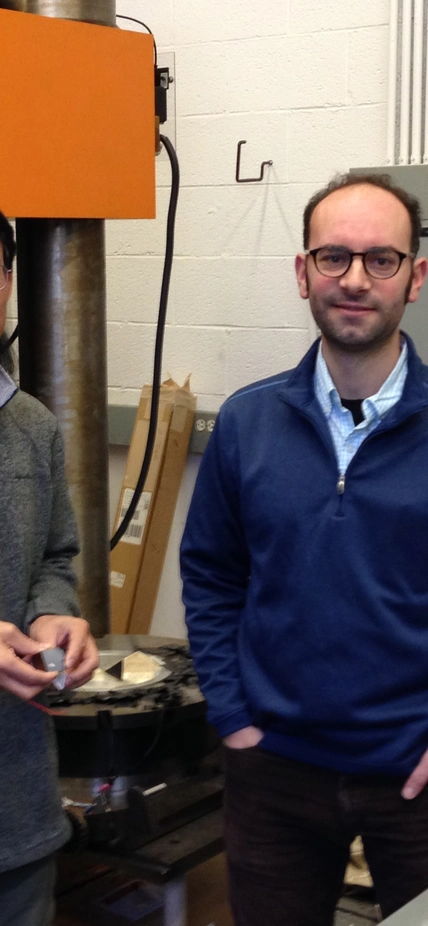Yingwei Fei, a high-pressure experimentalist at the Geophysical Laboratory, and Peter Driscoll, theoretical geophysicist in the Department of Terrestrial Magnetism, have been awarded a Carnegie Science Venture Grant for their project “Direct Shock Compression of Pre-synthesized Mantle Mineral to Super-Earth Interior Conditions.”
The project is an entirely new approach to investigate the properties and dynamics of super-Earths—extrasolar planets with masses between one and 10 times that of Earth. They will use the world’s most powerful magnetic, pulsed-power radiation source, called the Z Machine at Sandia National Laboratory, to generate shock waves that can simulate the intense pressure conditions of these enormous bodies. Reaching such high pressures has not been possible before with conventional techniques. The results will be used to develop models and predictions of super-Earth interiors.
Carnegie Science Venture Grants ignore conventional boundaries and bring together cross-disciplinary researchers with fresh eyes to explore different questions. Each grant provides $100,000 support for two years. The belief is that these projects will grow in unexpected ways with many surprises.
There are more than 3,000 confirmed exoplanets and many of them are super-Earths. Scientists want to know more about the interior processes and conditions of those giant exoplanets. Earth’s lower most mantle reaches pressures of some 1.3 million times standard atmospheric pressure (136 GPa). A super-Earth, ten times the mass of Earth, would have pressures of almost 13 million atmospheres (1300GPa). The Department of Energy has only recently allowed few academic institutions to use the Z Machine through the Z Fundamental Science Program. Fei’s team was granted access through a highly competitive application process. The facility is capable of reaching pressures above 10 million atmospheres (1000GPa).
The new work requires interdisciplinary collaborations and new technical development, including large-sample synthesis with specialized diamond anvils. Experiments, led by Fei, will provide new data on the density distribution and thermal conditions in super-Earths that will be used for thermal evolution modeling and predictions by Driscoll. Up to now, the duo has been working on similar geophysical problems that they soon hope to apply to this new realm of extreme planetary interiors.
